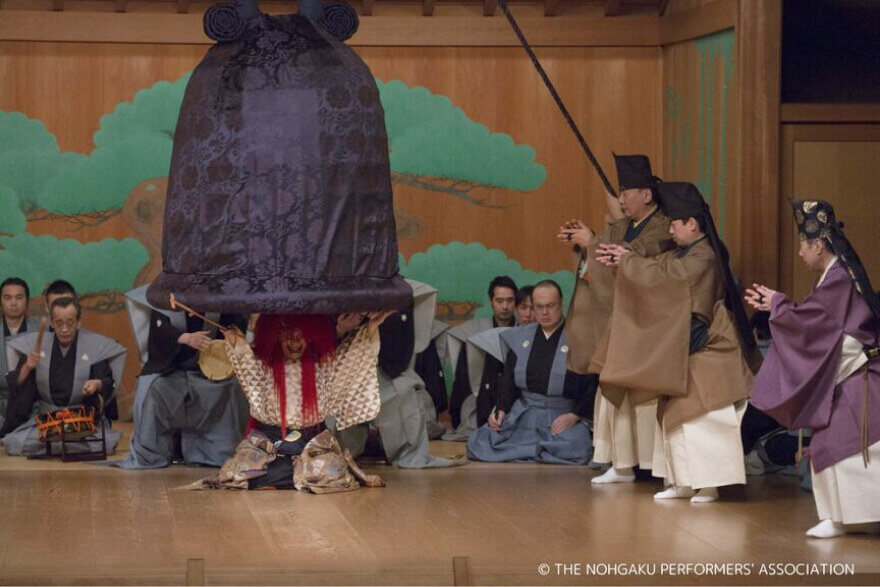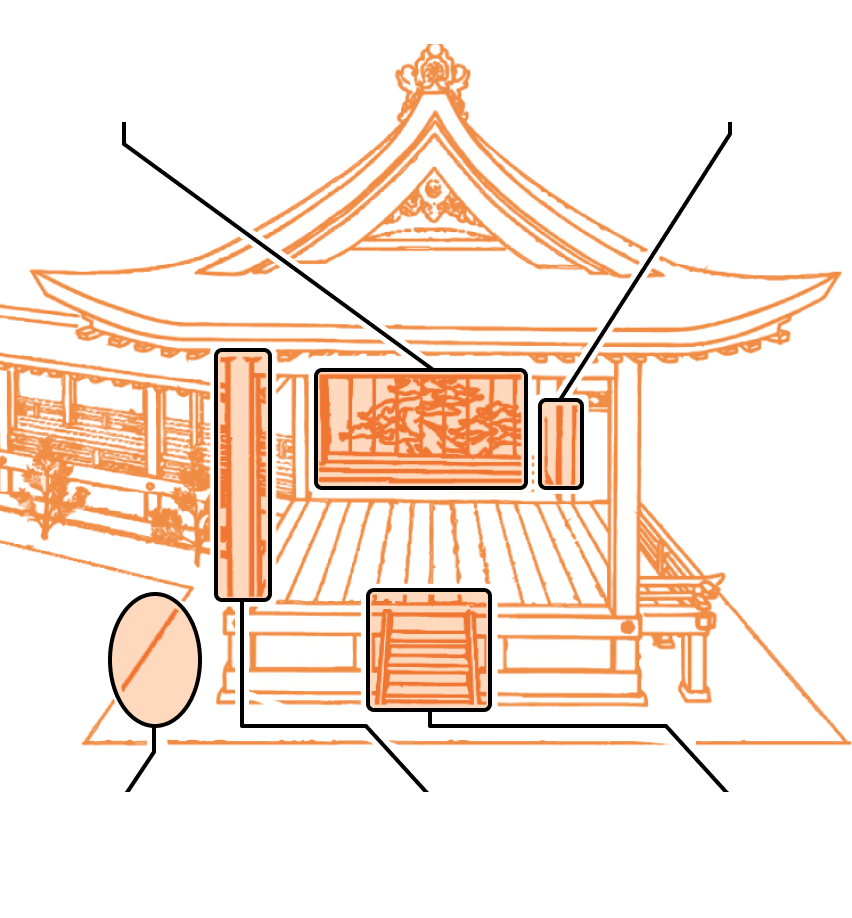
- Mirror BoardKagami-ita
- Sliding DoorKirido-guchi
- Graveled AreaShirasu
- PillarsPillars
- StepsKizahashi
Click or tap on the illustration of the Noh theater below to display explanations. Let’s explore the parts you are interested in.
Mirror Board Kagami-ita
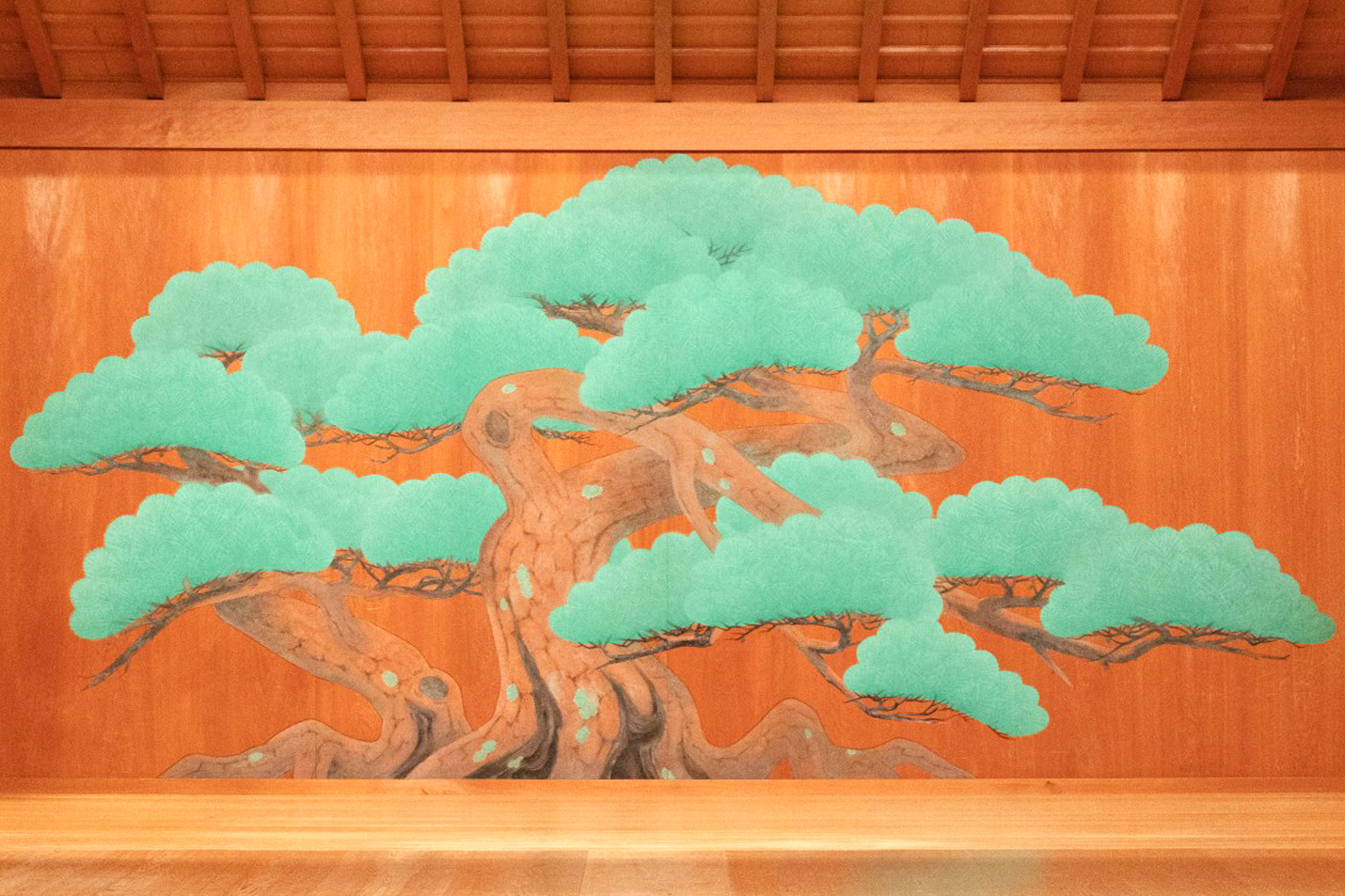
At the back of the Noh stage, the “Kagami-ita” often features a painting of an old pine tree, representing a pine tree that has lived for many years. There is a theory that it reflects the “Yogo-no-Matsu” pine tree at Kasuga Taisha Shrine in Nara, like a mirror, enhancing the beauty of the stage. “Yogo” symbolizes the divine descent of gods and buddhas to this world, and it also represents the sacred space where performers act towards the gods. Moreover, the evergreen pine, which remains unchanged throughout the seasons, is believed to have become a fixture for this reason.
Sliding Door Kirido-guchi

In the corner of the Noh stage, there is an inconspicuous small door called the ‘Kirido-guchi.’ This door is mainly used as an entrance by the Jiutai (chorus) and Kōken (stage assistants). It’s also used for performers who have finished their role or characters that have been ‘killed’ on stage to exit.
Graveled AreaShirasu
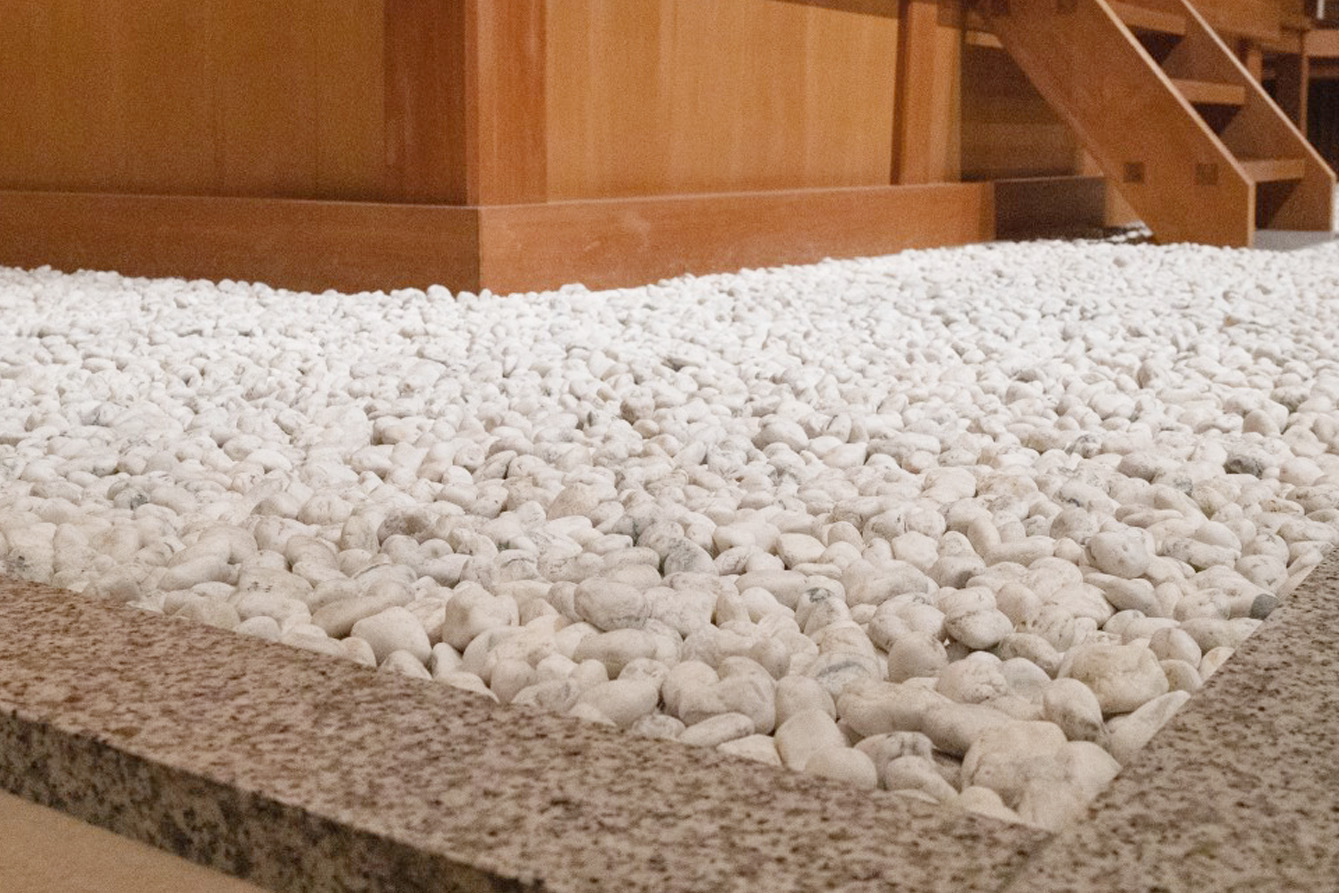
Around the Noh stage, there is an area called “Shirasu,” covered with white pebbles. This was used in the past when Noh was performed outdoors, to make the stage stand out and to reflect sunlight as natural lighting. This remnant of the past is still present today.
Shite-bashira, Waki-bashira, Fue-bashira, Metsuke-bashira Pillars
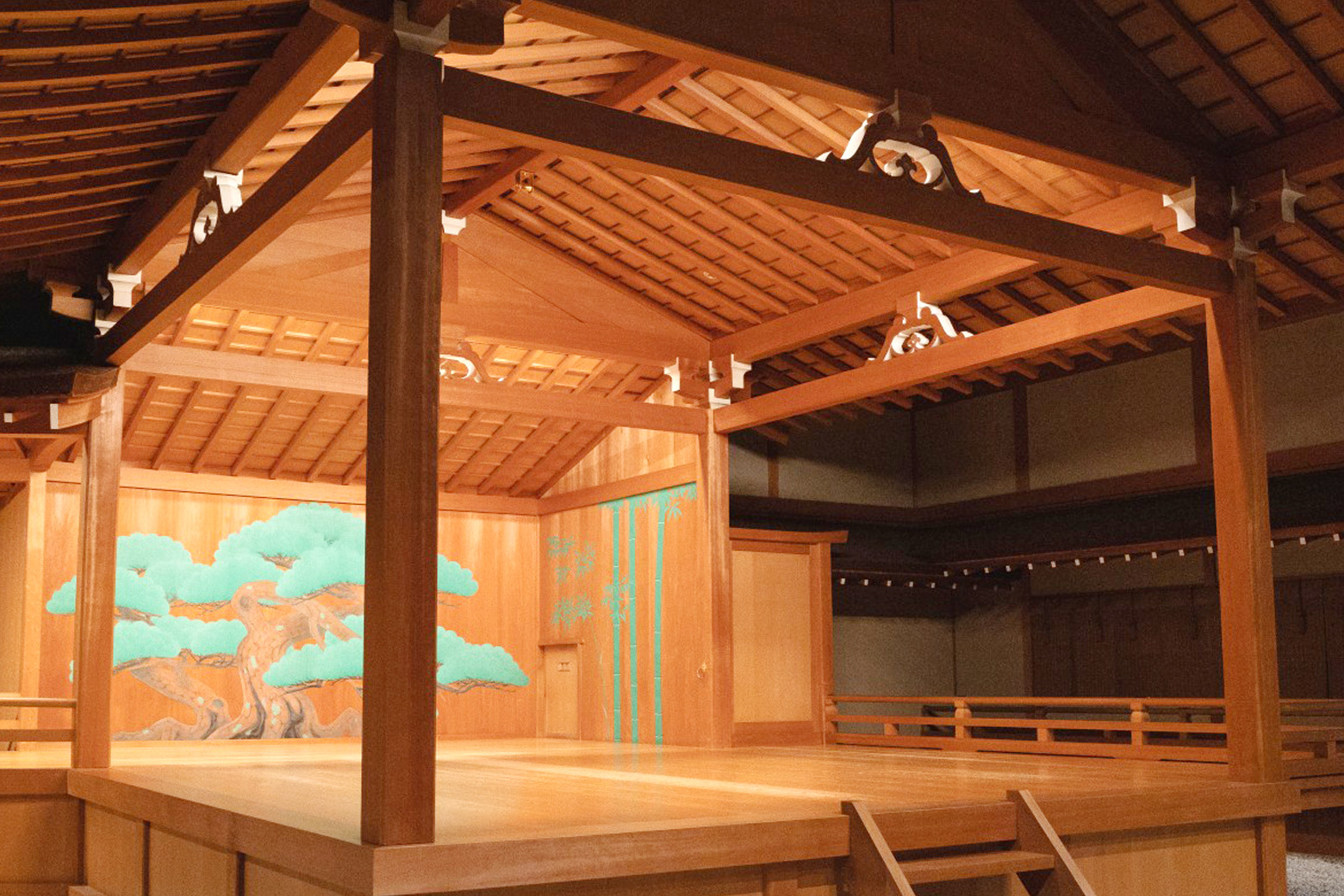
The four pillars on the Noh stage might obstruct the view for the audience, but for performers wearing Noh masks, they are vital markers to identify their position within their limited field of vision. Especially, the “Metsuke-bashira” pillar (the front left pillar when facing the stage) plays an important role as the pillar performers focus on during their dance.
StepsKizahashi
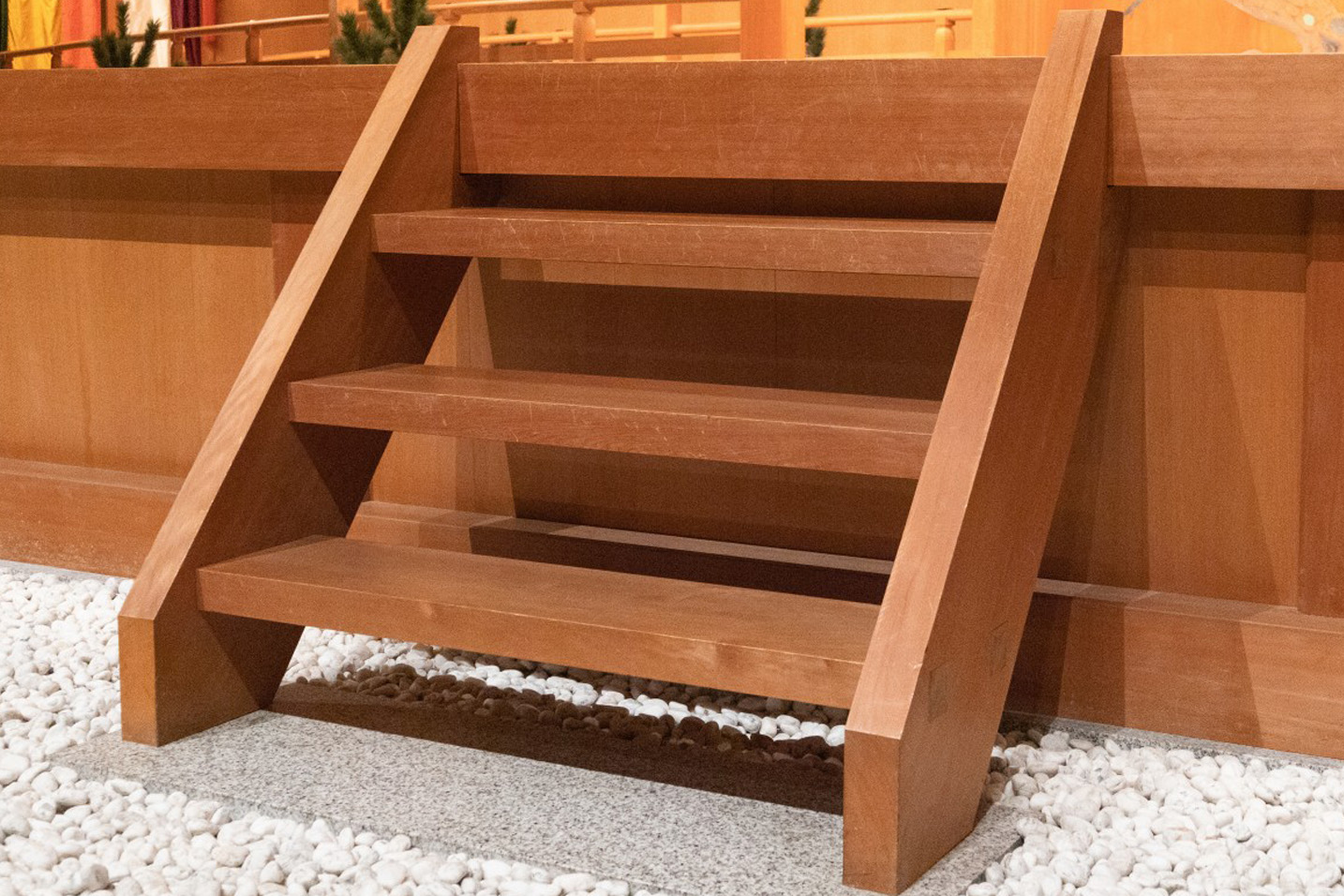
In front of the Noh stage, there are steps called ‘kizahashi.’ These are a remnant from the past when, before official performances, the person in charge would ascend the stage and announce the start of the performance. Today, they are used by performers as markers to gauge the front of the stage, though they are rarely used in actual performances.
- Mirror BoardKagami-ita
- Sliding DoorKirido-guchi
- Graveled AreaShirasu
- PillarsPillars
- StepsKizahashi

- Multicolored CurtainAgemaku
- BridgewayHashi-gakari
- Three PinesSan no Matsu
- Three PinesNi no Matsu
- Three PinesIchi no Matsu
Click or tap on the illustration of the Noh theater below to display explanations. Let’s explore the parts you are interested in.
Multicolored CurtainAgemaku
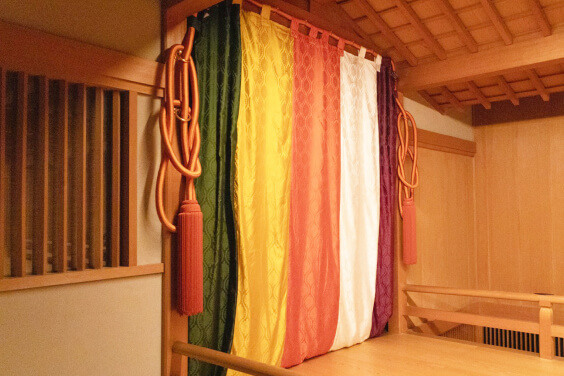
The Agemaku is a curtain with five colors that separates the “Mirror Room” and the “Hashigakari” of the Noh stage. The colors represent the five elements of Yin-Yang theory: wood, fire, earth, metal, and water. They are used for the actors’ entrances and exits. The opening of this curtain signals the start of the story, inviting the audience into a mysterious world.
BridgewayHashi-gakari
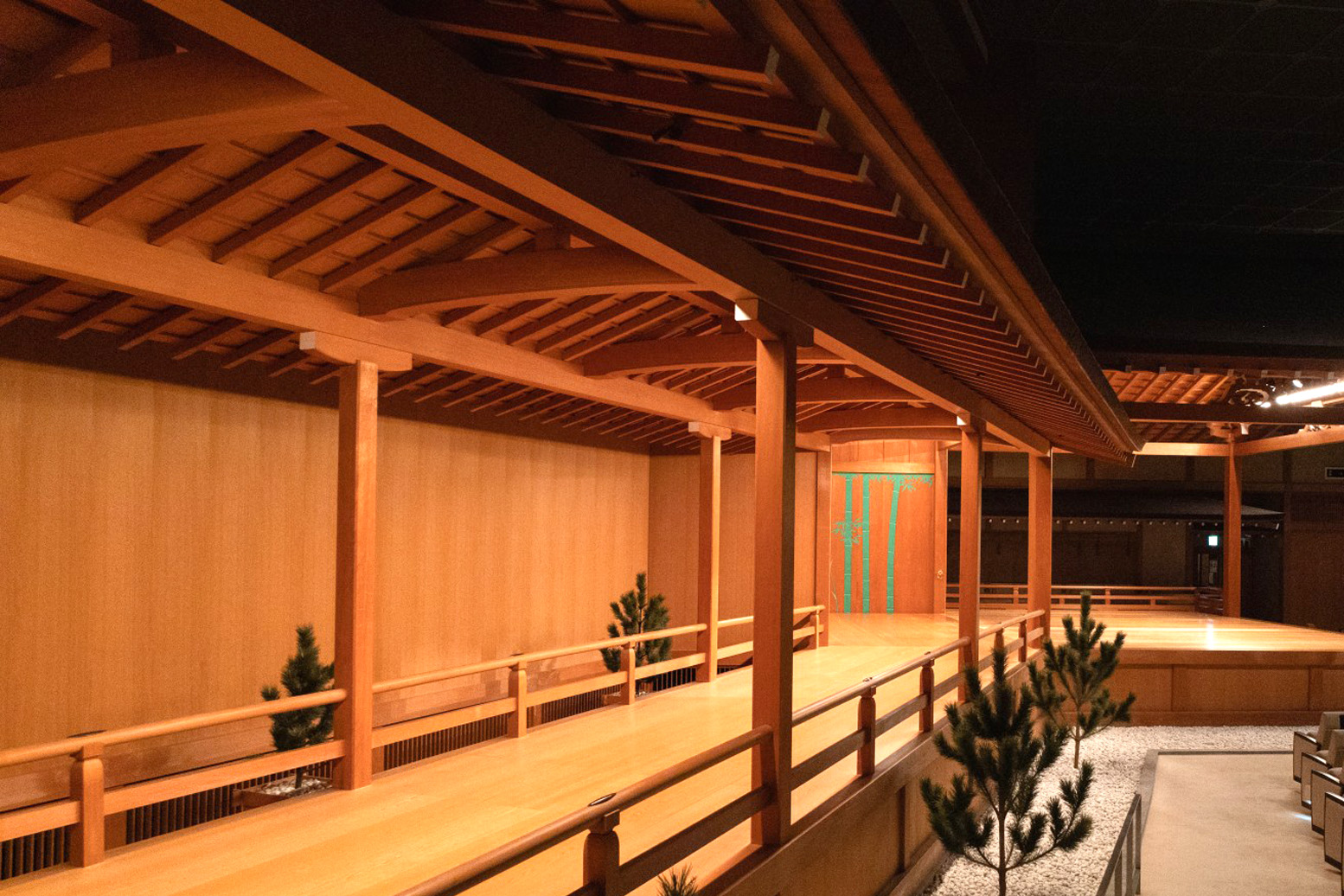
The Hashi-gakari is a passageway that connects the curtain and the main stage of the Noh theater. Through this path, actors make their entrance, leading into the world of the story. It also functions as a symbolic space connecting reality and the otherworld, adding depth to the performance.
Three PinesSan no Matsu

On the Noh stage, there are three pine trees named “Ichi-no-Matsu,” “Ni-no-Matsu,” and “San-no-Matsu.” These are located on the left side of the stage, along the Hashigakari, which is a pathway. The “Ichi-no-Matsu,” closest to the stage, is the tallest, followed by “Ni-no-Matsu” and “San-no-Matsu,” which get shorter as they are farther from the stage. This variation in height gives the audience a sense of depth and enhances the perception of the stage’s depth.
Three PinesNi no Matsu

On the Noh stage, there are three pine trees named “Ichi-no-Matsu,” “Ni-no-Matsu,” and “San-no-Matsu.” These are located on the left side of the stage, along the Hashigakari, which is a pathway. The “Ichi-no-Matsu,” closest to the stage, is the tallest, followed by “Ni-no-Matsu” and “San-no-Matsu,” which get shorter as they are farther from the stage. This variation in height gives the audience a sense of depth and enhances the perception of the stage’s depth.
Three PinesIchi no Matsu

On the Noh stage, there are three pine trees named “Ichi-no-Matsu,” “Ni-no-Matsu,” and “San-no-Matsu.” These are located on the left side of the stage, along the Hashigakari, which is a pathway. The “Ichi-no-Matsu,” closest to the stage, is the tallest, followed by “Ni-no-Matsu” and “San-no-Matsu,” which get shorter as they are farther from the stage. This variation in height gives the audience a sense of depth and enhances the perception of the stage’s depth.
- Multicolored CurtainAgemaku
- BridgewayHashi-gakari
- Three PinesSan no Matsu
- Three PinesNi no Matsu
- Three PinesIchi no Matsu
 Fun Facts About the Noh Stage
Fun Facts About the Noh Stage
The Echo of the Noh Stage Floor
The floor of the Noh stage, primarily made of cypress wood, has a special design that effectively resonates the music of Noh. Some Noh stages are equipped with large earthen jars under the floor as an acoustic feature. These jars enhance not only the sound of footsteps but also the voices of the chanters and the music of the instruments. Performers delicately act while feeling the reverberation of this floor.
The Charm of the Bell in 'Dōjōji'
The "Bell" used exclusively in the major Noh play "Dojoji." The "Bell," one of the most elaborate props (large stage property) in Noh, plays a crucial role, leaving a strong impression on the audience through the skillful handling by the performers.
